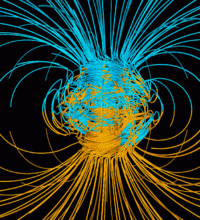
Photo from wikipedia
Near-field methods based on microphone array measurements are useful to understand how a source radiates sound. Due to discretization errors, these methods are typically restricted to low frequencies. Sparse approaches… Click to show full abstract
Near-field methods based on microphone array measurements are useful to understand how a source radiates sound. Due to discretization errors, these methods are typically restricted to low frequencies. Sparse approaches have gained considerable attention, as they can potentially recover a seemingly under-sampled signal with remarkable accuracy, extending the valid frequency range. However, near-field problems are generally not spatially sparse, and it is more appropriate to promote block-sparse solutions (i.e. spatially extended) rather than direct spatial sparsity. In this paper, a method is examined that promotes solutions with sparse spatial derivatives. The method seeks spatially extended solutions, valid over a wide frequency range, and suitable to near-fields and extended sources. The methodology is based on a Total Variation approach using higher order derivatives. The frequency range of validity is examined, as well as the robustness to noise. The performance of different finite difference stencils...
Journal Title: Journal of the Acoustical Society of America
Year Published: 2017
Link to full text (if available)
Share on Social Media: Sign Up to like & get
recommendations!